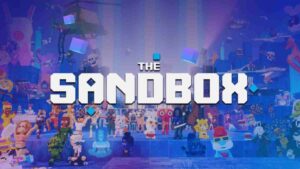Requisition VR started as a rough-around-the-edges physics sandbox with horror elements. It launched in early access on PC but never quite landed a consistent identity. Now, it’s coming to Meta Quest this October with a major overhaul that strips the concept down to something leaner and more accessible.
This isn’t just a port. The game has been restructured, rebalanced, and in many ways rebooted. The goal seems clear: focus on short-session, co-op survival rather than experimental crafting and open-ended chaos.
Gameplay Focus Shifts Toward Action Co-op
The original version emphasized building traps and crafting weapons out of junk in a zombie-infested neighborhood. It had moments of creativity but often felt clunky and uneven. The new Quest edition narrows that focus. Now it’s all about cooperative survival in tight, replayable rounds.
Players face off against waves of enemies while working together to secure objectives. Crafting is still present, but simplified, with less emphasis on physics experimentation and more on fast decisions under pressure. It leans more toward Left 4 Dead than Garry’s Mod now. This shift might disappoint those who enjoyed the original sandbox weirdness. But for VR players looking for tighter pacing and more structure, it’s a notable upgrade.
Visuals and Structure Adapted for Standalone VR
The Quest version runs as a standalone release, and the visual fidelity reflects that. Environments are simpler, lighting is less dynamic, and interactions are more streamlined. What it loses in visual flair, it gains in performance and clarity.
There’s no sprawling open map anymore. Instead, players tackle rounds in preset locations designed for quick match cycles. The devs have also removed the single-player story campaign entirely. That’s a significant change, signaling a shift in priorities toward multiplayer repeatability. The move makes sense for Quest’s player base, which favors social, quick-hit VR sessions over deep solo campaigns.
A Test Case for How VR Indies Can Pivot
Requisition VR is now in an unusual category: a game that fully reinvents itself between platforms. It’s not common to see indie VR titles rework core mechanics this drastically just to better fit a new audience.
That pivot says a lot about how Meta’s ecosystem is shaping development strategies. What works on SteamVR with a seated PC setup doesn’t always translate well to untethered headsets. The relaunch is a case study in adapting to that reality.
For players familiar with the first version, this new Requisition will feel almost like a different title. Whether that’s a good thing depends on what you wanted from it to begin with. But as a leaner, focused co-op survival experience, it fits Quest’s catalog more cleanly than its original incarnation ever did.
Virtual Reality Explorer & Game Reviewer
Always the first to plug in. VRSCOUT dives head-first into the most immersive VR worlds, analyzing mechanics, comfort, innovation, and that elusive “presence” factor. If he says it’s worth it, it probably is.




